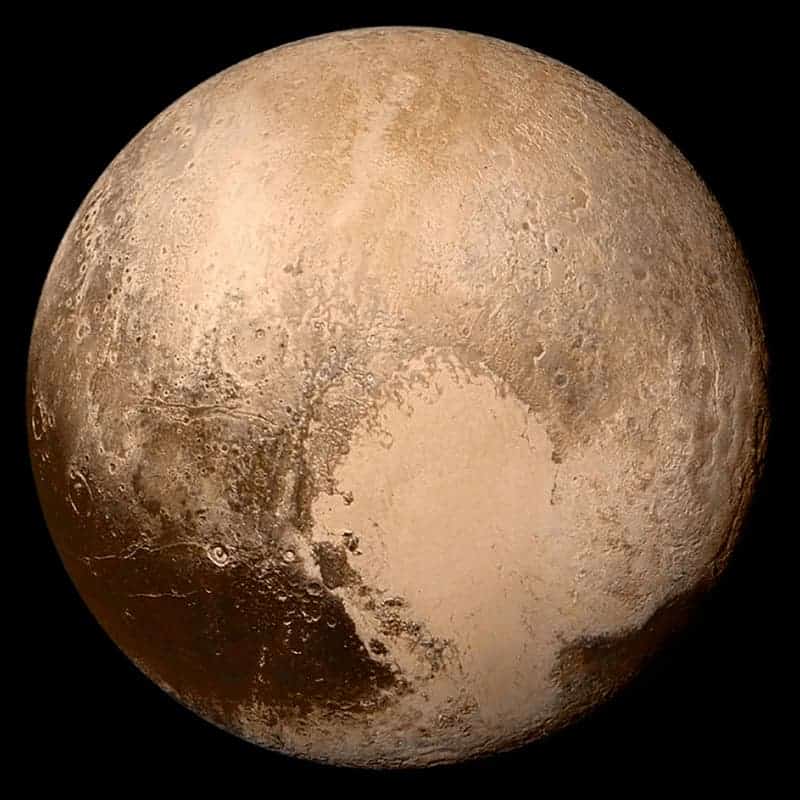Not that long ago, all we knew about Pluto was a few colored pixels — it was the best our satellites could do. We would be easily forgiven for thinking that Pluto was a frozen, barren, and… well, boring world. But while Pluto is frozen and almost certainly barren, it’s anything but boring.
The New Horizons missions showed us Pluto as we’ve never seen or dreamed before. Far from a quiet marble at the periphery of our solar system, Pluto has an active geology which, in many regards, is surprisingly similar to that of Earth.

It was in July 2015 that the New Horizons spacecraft allowed us to see Pluto as never before. More than 98 percent of Pluto’s surface consists of solid nitrogen, with traces of methane and carbon monoxide. This frozen nitrogen forms glaciers and plains, and is affected by geological faults and fissures — just like on Mars and Earth. In fact, Pluto’s geology is every bit as complex and exciting as Mars’, the New Horizons team announced.
Now, as data continues to be analyzed, we’re learning even more about Pluto. In a new study, researchers describe how Pluto’s “icy heart” controls the planetoid’s atmospheric processes.
The Tombaugh Regio formation is the largest bright surface feature on Pluto. From afar, it looks like an oversized cartoon heart. But upon closer inspection, the feature is nothing short of amazing.
Although they might look similar, the two lobes of the feature are geologically distinct. The western lobe, Sputnik Planitia, is smoother than the eastern, and probably has a different geological origin. It is this lobe, Sputnik Planitia, that the new study focused on.

The feature is believed to have originated as an impact basin that subsequently collected volatile ices. The basin’s composition is dominated by nitrogen, which also comprises most of Pluto’s thin atmosphere. During the day, when Pluto is exposed to the sun, a layer of this nitrogen melts and turns into vapor which flows into the atmosphere. At night, when it gets cold, the vapor condenses and once again, forms ice.
This cycle, researchers found, pushes Pluto’s atmosphere to circulate in the opposite direction of its spin — a unique phenomenon. The way the process works, heating during the day and cooling during the night, is akin to a heartbeat coming from Pluto’s heart-like feature.
“This highlights the fact that Pluto’s atmosphere and winds—even if the density of the atmosphere is very low—can impact the surface,” said Tanguy Bertrand, an astrophysicist and planetary scientist at NASA’s Ames Research Center in California and the study’s lead author.
Much like Pluto’s geology, its atmosphere is also very active. Just to get it out of the way — it’s 100,000 times thinner than that of Earth’s and incapable of supporting life as we know it; nevertheless, it features active processes and might even shape features on the surface.
“Before New Horizons, everyone thought Pluto was going to be a netball—completely flat, almost no diversity,” Bertrand said. “But it’s completely different. It has a lot of different landscapes and we are trying to understand what’s going on there.”
The airflow caused by the Sputnik Planitia basin is like wind patterns on Earth, bearing a striking similarity to the Kuroshio current on the west side of the North Pacific Ocean. Just like Kuroshio, Sputnik Planitia’s high cliffs trap cold air inside the basin, where it circulates and becomes stronger. The basin is an important driver and regulator of atmospheric processes. It’s the beating heart behind Pluto’s atmospheric bloodlines.
“Sputnik Planitia may be as important for Pluto’s climate as the ocean is for Earth’s climate,” Bertrand said. “If you remove Sputnik Planitia—if you remove the heart of Pluto—you won’t have the same circulation,” he added.
Pluto is a remarkable place, researchers conclude, and it’s amazing that we can understand it in such detail.
“It’s very much the kind of thing that’s due to the topography or specifics of the setting,” Bertrand happily concludes. “I’m impressed that Pluto’s models have advanced to the point that you can talk about regional weather.”
The study has been published in the Journal of Geophysical Research: Planets.









